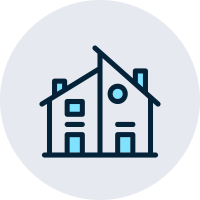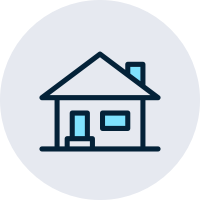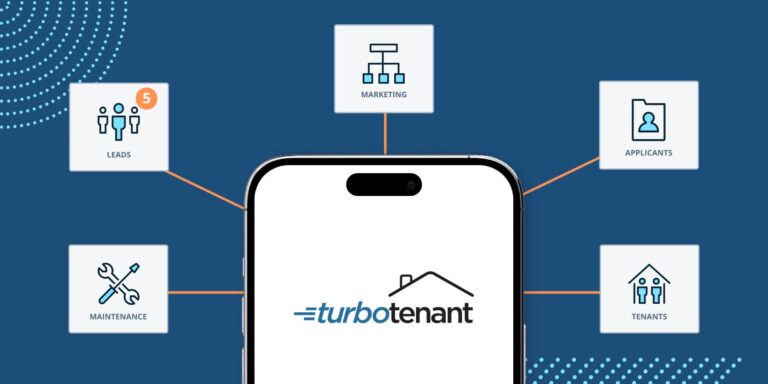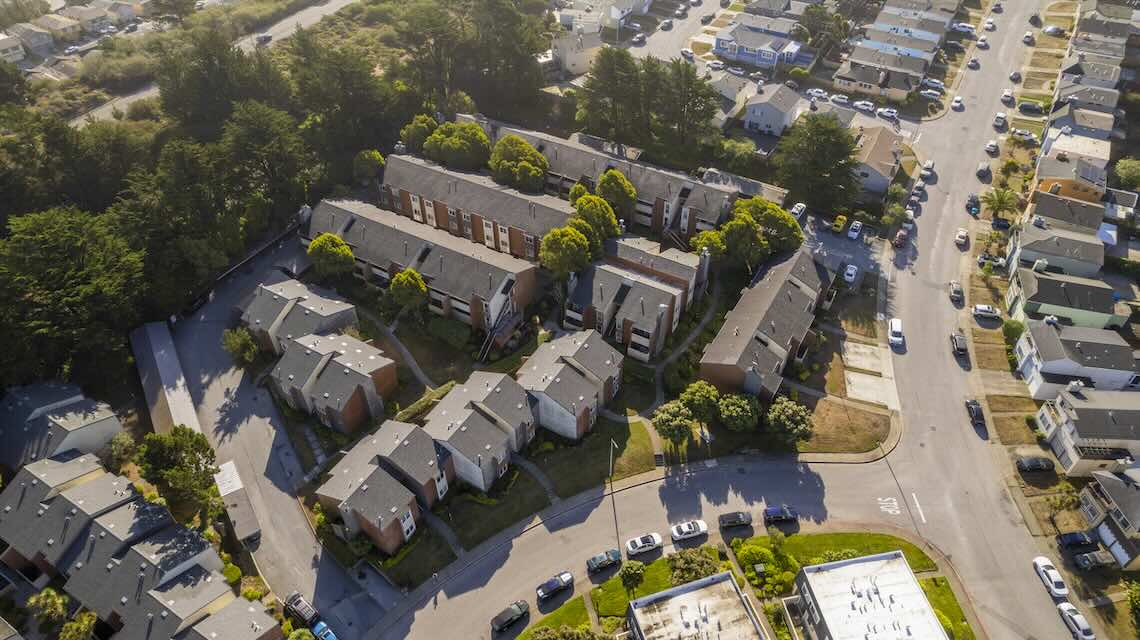Landlords who manage different types of properties, including multifamily and single-family homes, require property management software that can help simplify their processes across various property types.
As your property portfolio expands, it is essential to choose software that can adapt to your changing needs without having to use multiple solutions to fill in the gaps of limited platforms. For instance, you may currently manage a few single-family homes, but you never know when an opportunity to acquire a multifamily home may present itself.
Therefore, being prepared by selecting the right solution upfront is essential so you can easily take on new management challenges. Of course, with new properties comes the need to collect rent, create marketing listings, and screen tenants. Your software should be able to accommodate these requirements without forcing you to upgrade pricing tiers or purchase costly add-ons.
Let’s explore the need for specialized property management software, the features you’ll need to manage your portfolio more efficiently, and how to utilize software to manage them all from a single location.

The Need for Specialized Property Management Software
Managing single-family and multifamily homes comes with unique challenges for each property type. Before shifting our focus to single-family property management demands, we’ll examine the obstacles that multifamily homes presents.
Multifamily Homes
Managing multifamily homes comes with many considerations you’ll need to account for.
- Tenant Trouble: Dealing with multiple tenants per property can be time-consuming. You must handle lease agreements, rent collection, potential noise complaints, and tenant disputes.
- Higher Turnover: With more units, you’ll have a greater chance for vacancies. The challenges amplify if you have to deal with frequent tenant turnover, advertising costs, screening new tenants, and signing leases.
- Maintenance and Repairs: With multiple units, more can go wrong and need repair. Because you’ll have more units, you may have a broader range of maintenance requests to contend with. And, if they happen all at once, the situation could prove extremely difficult.
Single-Family Homes
Like multifamily properties, single-family homes aren’t exactly a cakewalk to manage. Be sure to consider the following.
- Spread Thin: If you’ve got only one single-family home, this won’t apply, but as you add more, your workload scatters geographically. You may need to travel long distances to address maintenance issues, show properties, or handle random tasks at each location. It can cost you a significant amount of time.
- Vacancy Blues: Vacancies in single-family homes hit hard because they represent a complete loss of rental income for that property. To minimize the damage, you’ll need tools to quickly market the property, screen tenants, and sign leases.
- Scaling Limitations: Growing your portfolio requires buying more individual properties should you go the single-family route. It gets complicated when you have to keep track of multiple leases, maintenance requests, and rent payments.
Key Features for Multifamily Home Property Management Software

After examining the challenges of each type of property management, we’ll turn our gaze to the features that can help you eliminate multifamily property management headaches and turn them into wins.
Tenant Screening
When you manage multifamily properties, you’ll likely need to screen a significant number of tenants — especially if multiple units simultaneously become vacant.
Make it easy by enabling your prospective tenants to supply their own personal information rather than collecting it from paper applications. Then, the screening report will be sent directly to your email for quick and easy reference.
Online Rent Collection
Rent collection for multifamily homes is probably more manageable if you do it in person than for single-family homes because your doors will be much closer together. But not everyone will pay rent at the same time, and you won’t want to visit the property two to four times just to collect rent.
With online rent collection, landlords collect tenant payments via ACH, debit, and credit cards. Plus, you’ll have the ability to set late payment reminders and automatically assign late fees, and tenants can set up automatic payments to give you peace of mind.
Maintenance Request Management
More units means more things that can break. Rather than fielding a litany of text messages, emails, and late-night phone calls from unhappy tenants, maintenance request management software puts all those requests in a single place.
Now, your tenants can use an app on their phone to submit maintenance requests at any time of the day, and they filter into your dashboard for easy management. It beats angry phone calls in the middle of your work day.
Lease Tracking and Renewal
You get a lease! You get a lease! You get a lease! Every single door in your multifamily property must have a lease attached.
When you have a large number to manage, quickly checking and seeing which ones are coming up for renewal can help you reduce vacancy rates by confirming with current tenants whether or not they plan to stay. If not, you can immediately start marketing the property.
Communication Tools
Imagine this: You’ve got two multifamily units with seven tenants, and two of them are texting you at once. A third one calls you. They all have different questions or requests.
Property management software communication tools filter out the noise and organize your conversations into a single place so you can remember what is what.
Document Storage
One of the most significant advantages of software used for property management is the ability to store all your documents in a single place. You’ll have lots of documents to manage when you have multiple doors.
Rather than stuffing your files in an accordion file holder, store them securely in the cloud and reference them from anywhere your folder isn’t.
Key Features for Single Family Home Property Management Software

You’ll need many of the same features for single-family homes as you will for multifamily dwellings, but the reasons they’re important might be a bit different.
Tenant Screening
Tenant screening is one of the bedrocks of property management in general. Because a vacancy in a single-family home means a complete loss of income from that property, you’ll want to ensure that only the best tenants move in.
With thorough screening procedures that uncover credit scores, background checks, and eviction records, you’ll have the best opportunity to keep your cash flow in a good place.
Online Rent Collection
Nobody wants to go to the bank. Not unless you’ve got a million-dollar check to cash, and even then, you’ll probably just use mobile deposit anyway. For single-family rental homes, especially if you have a couple of spread-out units, collecting rent online is far easier.
Rather than arranging a meeting location to pick up cash or checks or driving to each unit individually, input your bank account information into a secure portal and let your tenants deposit payments directly into the account from anywhere they have an internet connection. It’s landlording for the modern age.
Property Listing and Marketing
As we mentioned, making sure that your single-family home is occupied is critical to maintaining a positive cash flow.
One of the best ways to ensure high-quality tenants see your property is to list it on all the most visible online listing websites. When you spread your properties out across the web, it’s like spreading out your bets. One is bound to hit for a jackpot.
Maintenance and Repair Management
If you want to reduce tenant turnover as much as possible, address maintenance requests promptly. Happy tenants renew their leases, and a great way to make them happy is by creating a comfortable and livable environment.
With maintenance and repair management software, tenant maintenance issues will have fewer opportunities to slip through the cracks because they’ll all flow into your management dashboard, staying top of mind.
Advantages of Using TurboTenant for Multifamily and Single-Family Homes

TurboTenant is an easy-to-use property management software for multifamily and single-family homes and beyond. From the dashboard, landlords can easily select the property type, whether it is single-family, multifamily, apartment, condo, or another type, including RVs.
All your properties will easily be found in the “Properties” section of the TurboTenant interface, enabling you to manage all the details related to that property, including rent collection, lease agreements, and maintenance management.
No matter the types of properties in your portfolio, TurboTenant makes it easy to manage them. Sign up for a free account today and make DIY landlording less painful.







